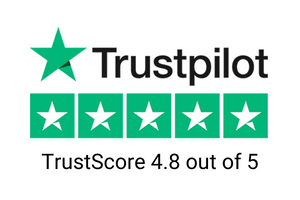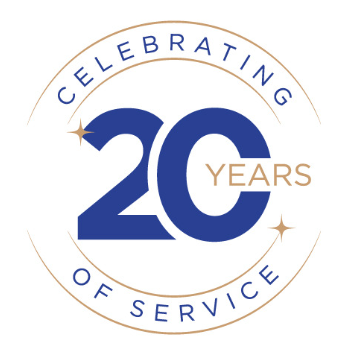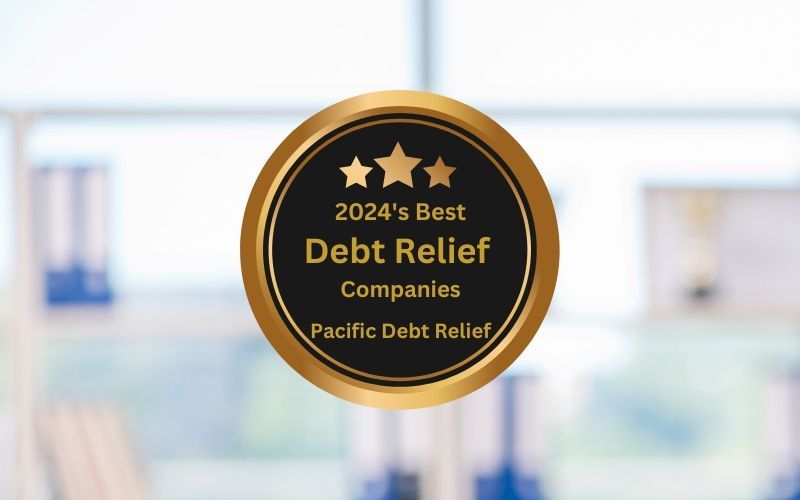Melting Away Your Debt with the Snowball Method

Are you tired of feeling overwhelmed by debt? Do you dream of achieving financial freedom but don't know where to start? If so, you're not alone.
Millions of people struggle with debt, but the good news is that there are proven strategies to help you pay off your debts and regain control of your finances. One such strategy is the debt snowball method.
In this comprehensive guide, we'll dive deep into the debt snowball method, exploring its history, key principles, and step-by-step implementation.
By the end of this article, you'll have a clear understanding of how the debt snowball method works and whether it's the right choice for your unique financial situation. So, let's get started on the path to financial freedom!
If you would like to speak to a debt specialist, click here for a free consultation.
What is the Debt Snowball Method?
The debt snowball method is a debt repayment strategy that focuses on paying off your debts from smallest to largest, regardless of interest rates.
This approach was popularized by personal finance expert
Dave Ramsey, who emphasizes the psychological benefits of gaining momentum by quickly paying off smaller debts.
The key principles of the debt snowball method are:
- List your debts from smallest to largest balance
- Make minimum payments on all debts except the smallest
- Put as much extra money as possible toward the smallest debt until it's paid off
- Once the smallest debt is eliminated, roll its payment into the next smallest debt
- Repeat the process until all debts are paid off
By focusing on the smallest debts first, you experience quick wins and a sense of accomplishment. This psychological boost can help you stay motivated and committed to your debt repayment plan, even when faced with larger debts down the road.
It's important to note that the debt snowball method is not necessarily the most mathematically optimal approach, as it doesn't prioritize debts with higher interest rates.
However, many people find that the emotional satisfaction of seeing debts disappear one by one outweighs the potential interest savings of other methods.
How the Debt Snowball Method Works
Now that you understand the basic principles of the debt snowball method, let's take a closer look at how to implement it step by step.
Step 1: List your debts from smallest to largest
Start by creating a list of all your debts, excluding your mortgage. Include the creditor, total balance, minimum payment, and interest rate for each debt. Then, order your debts from smallest to largest balance.
For example, your list might look like this:
| Debt | Balance | Minimum Payment | Interest Rate |
|---|---|---|---|
| Credit Card A | $500 | $25 | 18% |
| Medical Bill | $1,200 | $50 | 0% |
| Credit Card B | $3,000 | $90 | 22% |
| Car Loan | $7,500 | $300 | 6% |
| Student Loan | $15,000 | $200 | 5% |
Step 2: Make minimum payments on all debts except the smallest
Continue making the minimum payments on all your debts except the smallest one. This ensures that you avoid late fees and additional interest charges.
Step 3: Put extra money toward the smallest debt
Attack your smallest debt with intensity. Put as much extra money as you can toward this debt each month until it's paid off. This might mean cutting expenses, finding side hustles, or selling unused items. You can use budgeting apps to easily track spending.
Step 4: Roll the payment into the next smallest debt
Once your smallest debt is paid off, take the money you were putting toward that debt and apply it to the next smallest balance. This is in addition to the minimum payment you were already making on the second smallest debt.
Step 5: Repeat the process
Continue this process, focusing all your extra money on the smallest remaining debt while making minimum payments on the others. As each debt is paid off, you'll have more money to put toward the next one, creating a snowball effect that accelerates your progress.
Throughout this process, it's crucial to create a budget and stick to it. This will help you identify areas where you can cut expenses and find extra money to put toward your debt.
Advantages of the Debt Snowball Method
The debt snowball method has several advantages that make it an attractive choice for many people looking to pay off their debts.
Psychological Benefits
One of the primary benefits of the debt snowball method is the psychological boost it provides. By focusing on paying off your smallest debts first, you experience quick wins and a sense of accomplishment. This can be incredibly motivating, especially when you're facing a mountain of debt.
Seeing your debts disappear one by one can give you the confidence and momentum you need to tackle your larger debts. This psychological effect is often more powerful than the mathematical advantages of other debt repayment strategies.
Increased Motivation
The quick wins and sense of progress provided by the debt snowball method can help increase your motivation to stay on track with your debt repayment plan. As you see your efforts paying off, you'll be more likely to continue making sacrifices and putting extra money toward your debts.
This increased motivation can be especially helpful when you're facing a long debt repayment journey. By celebrating your progress along the way, you can maintain the drive and determination needed to reach your ultimate goal of becoming debt-free.
Easy to Understand and Implement
Another advantage of the debt snowball method is its simplicity. The concept of paying off your smallest debts first is easy to understand and implement, even if you don't have a strong financial background.
This simplicity can make it easier to stick to your debt repayment plan, as you don't have to worry about complex calculations or constantly adjusting your strategy based on interest rates.
Builds Momentum
As you pay off each debt, you'll free up more money to put toward your remaining debts. This creates a snowball effect, where your debt repayment gains momentum over time.
This momentum can be both financially and psychologically rewarding. As you see your progress accelerate, you'll be even more motivated to continue paying off your debts and reaching your financial goals.
Disadvantages of the Debt Snowball Method
While the debt snowball method has many advantages, it's important to consider some of its potential drawbacks as well.
May Not Save the Most Money on Interest
One of the main criticisms of the debt snowball method is that it doesn't prioritize debts with the highest interest rates. By focusing on the smallest balances first, you may end up paying more in interest over time compared to other strategies that target high-interest debts.
This is because debts with higher interest rates will continue to accrue more interest while you're focusing on paying off your smaller, lower-interest debts. For some people, the psychological benefits of the debt snowball method outweigh this potential financial drawback.
Can Take Longer to Become Debt-Free
Because the debt snowball method doesn't prioritize high-interest debts, it may take longer to become completely debt-free compared to other strategies.
If your larger debts have significantly higher interest rates than your smaller debts, you may end up spending more time and money on your debt repayment journey.
However, it's important to remember that the most effective debt repayment strategy is the one you can stick with for the long haul. If the debt snowball method helps you stay motivated and committed, it may be the best choice for your individual situation.
Requires Discipline and Commitment
Like any debt repayment strategy, the debt snowball method requires discipline and commitment. You'll need to create a budget, stick to it, and be consistent in putting extra money toward your debts.
This can be challenging, especially if you're facing a tight financial situation or unexpected expenses. It's essential to have a plan in place for handling setbacks and staying on track with your debt repayment goals.
To help stay disciplined and committed, consider:
- Automating your payments
- Cutting unnecessary expenses
- Finding an accountability partner
- Celebrating your progress along the way
By staying focused on your ultimate goal and being proactive in your debt repayment efforts, you can overcome the challenges and potential disadvantages of the debt snowball method.
Debt Snowball Method vs. Other Debt Repayment Strategies
While the debt snowball method is a popular choice, it's not the only debt repayment strategy available. Let's compare the debt snowball method to two other common approaches: debt avalanche and debt consolidation.
Debt Avalanche Method
The debt avalanche method, also known as the debt stacking method, prioritizes paying off debts with the highest interest rates first. Like the debt snowball method, you make minimum payments on all your debts. However, instead of putting extra money toward your smallest debt, you focus on the debt with the highest interest rate.
Comparison with the Debt Snowball Method
The main difference between the debt avalanche and debt snowball methods is the order in which you pay off your debts. While the debt snowball method focuses on the psychological benefits of quickly paying off smaller debts, the debt avalanche method prioritizes the financial benefits of minimizing interest charges.
Pros and Cons of the Debt Avalanche Method
Pros:
- Saves more money on interest over time
- This can result in faster overall debt repayment
Cons:
- May take longer to see progress and experience wins
- Can be less motivating for some people
Debt Consolidation
Debt consolidation involves combining multiple debts into a single, larger debt, often with a lower interest rate. This can be done through a balance transfer credit card, personal loan, or home equity loan.
Comparison with the Debt Snowball Method
While the debt snowball method focuses on paying off debts individually, debt consolidation simplifies your debt repayment by combining multiple debts into one. This can make your debt more manageable and potentially lower your overall interest charges.
Pros and Cons of Debt Consolidation
Pros:
- Simplifies debt repayment
- Can lower interest rates and monthly payments
- May improve credit score by reducing credit utilization
Cons:
- May require good credit to qualify for favorable rates
- This can tempt some people to continue overspending
- May have fees associated with balance transfers or loan origination
Debt Management
It involves working with a credit counseling agency to create a plan for repaying your debts. The agency may negotiate with your creditors to lower interest rates or waive fees, and you make a single monthly payment to the agency, which then distributes the funds to your creditors. The National Foundation for Credit Counseling is great for finding reputable credit counseling agencies and learning more about debt management services.
Comparison with the Debt Snowball Method
While the debt snowball method is a self-directed approach, debt management involves working with a third party to create and implement a debt repayment plan. Debt management can be helpful for those who need additional support and guidance in their debt repayment journey.
Pros and Cons of Debt Management
Pros:
- Can lower interest rates and monthly payments
- Provides professional guidance and support
- May help improve credit scores over time
Cons:
- May have fees associated with the service
- Requires giving up control of your debt repayment to a third party
- May have a negative impact on credit scores initially
Staying Motivated While Using the Debt Snowball Method
Paying off debt can be a long and challenging journey, and it's essential to stay motivated throughout the process. Here are some tips for staying focused and committed to your debt repayment plan.
Set Goals and Celebrate Milestones
One of the keys to staying motivated is setting clear, achievable goals and celebrating your progress along the way. Break your debt repayment journey into smaller milestones, such as paying off your first debt or reaching a specific debt reduction amount.
When you reach these milestones, take the time to celebrate your accomplishments. This can be as simple as treating yourself to a favorite meal or activity or sharing your success with friends and family. Acknowledging your progress will help keep you motivated and focused on your ultimate goal.
Find an Accountability Partner
Having someone to support and encourage you can make a significant difference in your debt repayment journey. Consider finding an accountability partner, such as a friend, family member, or online community, who can help keep you on track.
Share your goals, progress, and challenges with your accountability partner, and check in with them regularly. Knowing that someone else is invested in your success can provide an extra layer of motivation and help you stay committed to your debt repayment plan.
Visualize Your Debt-Free Life
When you're in the midst of paying off debt, it can be easy to lose sight of your ultimate goal. Take time to visualize what your life will be like when you're debt-free. Imagine the sense of freedom, security, and opportunities that will come with being financially unburdened.
Create a vision board or write down your debt-free dreams, and refer to them when you're feeling discouraged or tempted to overspend. Keeping your eyes on the prize will help you stay motivated and focused on your long-term objectives.
Educate Yourself and Seek Inspiration
Continue to educate yourself about personal finance and debt repayment strategies. Read books, blogs, and articles that provide valuable insights and tips for managing your money and staying motivated.
Seek out inspiration from others who have successfully paid off their debts using the debt snowball method. Read success stories, join online forums, and attend financial workshops or seminars.
Surrounding yourself with positive influences and continuous learning opportunities will help you stay engaged and motivated throughout your debt repayment journey.
Remember, staying motivated is a crucial component of successfully implementing the debt snowball method. By setting goals, finding support, visualizing your debt-free life, and continuing to educate yourself, you'll be well-equipped to overcome challenges and achieve your financial dreams.
FAQs
What types of debt can the debt snowball method be applied to?
The debt snowball method can be applied to most types of unsecured debt, such as:
- Credit card debt
- Personal loans
- Medical bills
- Student loans
- Payday loans
Secured debts, like mortgages and car loans, are generally not included in the debt snowball method, as they often have lower interest rates and are tied to essential assets.
How do I create a list of my debts for the debt snowball method?
To create a list of your debts for the debt snowball method, follow these steps:
- Gather all your debt information, including balances, minimum payments, and interest rates.
- List your debts from smallest to largest balance, regardless of interest rate.
- Include the creditor's name, total balance, minimum payment, and interest rate for each debt.
- Update your list as you pay off debts and your balances change.
What if I can't afford to put extra money toward my smallest debt?
If you're struggling to find extra money to put toward your smallest debt, consider:
- Creating a budget to identify areas where you can cut small expenses
- Finding ways to increase your income, such as taking on a side hustle
- Selling unused items to generate extra cash
- Negotiating with creditors to lower interest rates or minimum payments
- Even small amounts of extra money can make a difference in your debt repayment progress.
How long does it typically take to become debt-free using the debt snowball method?
The length of time it takes to become debt-free using the debt snowball method varies depending on factors such as:
- The total amount of debt you have
- Your income and expenses
- The amount of extra money you can put toward your debts each month
On average, people who use the debt snowball method take between 18 months to 5 years to become debt-free. However, your individual timeline may be shorter or longer based on your unique financial situation.
What should I do if I'm struggling to stay motivated while using the debt snowball method?
If you're struggling to stay motivated, try:
- Celebrating your progress and milestones
- Finding an accountability partner to support and encourage you
- Visualizing your debt-free life and the opportunities it will bring
- Educating yourself about the warning signs of debt addiction and seeking inspiration from others who have successfully paid off debt
Remember that setbacks and challenges are a normal part of the debt repayment process. Stay focused on your long-term goals and be kind to yourself as you work toward financial freedom.
Can I use the debt snowball method if I have a low credit score?
Yes, you can use the debt snowball method regardless of your credit score. The debt snowball method focuses on paying off your debts, which can help improve your credit score over time by reducing your credit utilization and demonstrating a positive payment history.
What should I do if I'm struggling to stay motivated while using the debt snowball method?
If you're struggling to stay motivated, try:
- Celebrating your progress and milestones
- Finding an accountability partner to support and encourage you
- Visualizing your debt-free life and the opportunities it will bring
- Educating yourself about the warning signs of debt addiction and seeking inspiration from others who have successfully paid off debt
Remember that setbacks and challenges are a normal part of the debt repayment process. Stay focused on your long-term goals and be kind to yourself as you work toward financial freedom.
Final Thoughts
Throughout this comprehensive guide, we've explored the debt snowball method in detail, from its basic principles and step-by-step implementation to its advantages and disadvantages compared to other debt repayment strategies.
We've seen real-life examples of people who have successfully used the debt snowball method to become debt-free and discussed tips for staying motivated throughout the debt repayment process.
The debt snowball method involves paying off your debts from smallest to largest, regardless of interest rates. This approach is designed to provide quick wins and build momentum, helping you stay motivated and committed to your debt repayment plan.
While the debt snowball method may not always be the most mathematically optimal approach, its psychological benefits can be powerful for many people. Combining the debt snowball method with other strategies, such as debt consolidation or the debt avalanche method, can help you find the most effective approach for your individual needs.
If you are struggling with overwhelming debt and want to explore your debt relief options, Pacific Debt Relief offers a
free consultation to assess your financial situation. Our debt specialists can provide objective guidance relevant information and support to help find the right debt relief solution.
Reduce Your Credit Card Debt By Up to Half

BBB Reviews | 4.9/5.0 Rating









 Do Not Sell My Personal Information
Do Not Sell My Personal Information